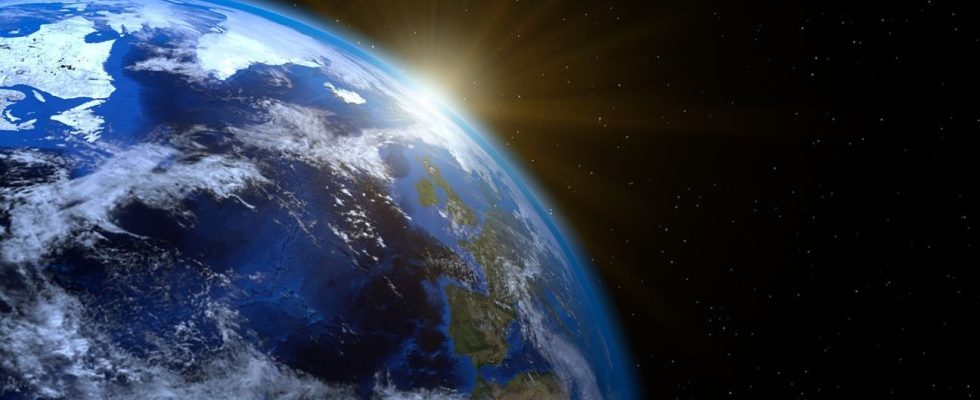Who said that time was a universal, fixed value? From minutes that seem like hours when you’re waiting for your train to days that pass at breakneck speed when you’re well surrounded, it’s hard to believe that a second is always worth a second. To ensure this, since 1967, Coordinated Universal Time (UTC) has been based on ultra-stable atomic clocks.
In other words, it is by zooming in at the atom level that we find a regularity of movement fine enough to set all our watches precisely at the same time and operate our digital infrastructures and our communication systems, such as navigation. GPS. Except that this regularity is not valid on a global scale, and that the Earth does not rotate on its axis exactly in 24 hours.
28 records broken in one year
Of course, it plays out every day to the millisecond, plus or minus. For several decades, the trend was towards a slowdown in the speed of rotation, that is to say that the Earth rotated slightly more slowly than our watches. In 1972, metrologists, the scientists who calculate time, therefore set up a “leap” second which is added to the clocks of our computers each time the gap becomes too significant. The last addition dates back to 2016, says Duncan Agnew, author of a study published Wednesday in the journal Natureat AFP.
Except that precisely, since 2016, the trend has reversed and shifted towards an acceleration in the speed of rotation of the Earth. In 2020, the record for the shortest day ever observed was broken 28 times according to the magazine Geo. A record broken again on June 29, 2022, relay Future, with an “astronomical” day lasting 1.59 milliseconds less than the “atomic” day. This may be a small detail for you, but for metrologists, it means a lot.
Completely lost computer programs
Considering this trend, they have decided to eliminate the leap second in 2035. Worse, they are wondering about the establishment of a “negative” leap second. However, the programs “assume that they are all positive,” explains Duncan Agnew, of the Institute of Geophysics at the University of California at San Diego. The negative second would thus risk desynchronizing computers and satellites. “I would not recommend being on board a plane at that time,” grimaces to AFP Demetrios Matsakis, former chief scientist of the United States Naval Observatory, who has not took part in the work.
To better understand this change in the speed of the Earth’s engine, we must return to the reasons for the daily irregularity of the Earth’s rotation. Several factors combine, recalls Future : tides, air masses, movement of satellites and melting ice, as well as the mysterious “Chandler oscillation”, which very slightly changes the axis of rotation of the Earth. However, this oscillation disappeared between 2017 and 2020, notes the specialized site Time and Date.
As long as there’s ice, there’s hope
Global warming is also largely at play, and could paradoxically give scientists time. Indeed, the melting of the ice helps slow down the speed of rotation of the Earth, an effect documented since the 1950s. “But the novelty of my work is to show the extent of the impact of the melting of the ice on the rotation of the Earth. A change never seen before,” reveals Duncan Agnew, while the melting of the ice has accelerated in recent years.
According to his calculations, the acceleration in the Earth’s rotation speed would have made the negative second necessary from 2026, without the effects of global warming. But with the melting of the ice, this deadline would be postponed to 2029. This delay is rather welcome for metrologists, giving them “more time to decide if 2035 is the best date to eliminate the leap second, or if it is necessary to “give up before,” reacted Patrizia Tavella, from the International Bureau of Weights and Measures. But this respite is only temporary: at the rate that global warming is going, there will soon be no more ice to melt to slow the Earth down.

